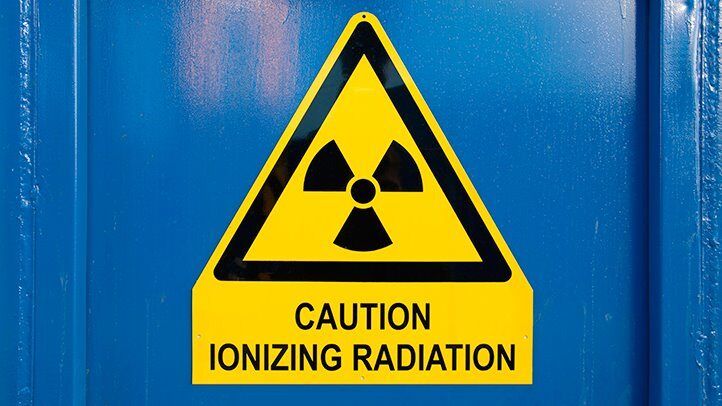According to Szu-Yuan Wu et al., research mentioned that Radiation therapy (RT) consists of high-energy X-ray radiation intended to target rapidly dividing cells, such as tumor cells. RT damages intracellular DNA, often impairing cell division and subsequent cell death. However, RT requires a balance between destroying cancer cells and minimizing damage to normal cells.
Considering RT can kill not only dividing non-cancer cells but also dividing cancer cells, leading to unwanted side effects.
RT-induced secondary malignancies (SM) can occur after X-ray irradiation. RT also causes DNA mutations, cell death, and free radical damage to essential cellular enzymes. The severity of the effects of RT is seen in radiation-induced liver disease (RILD), where hepatotoxicity progresses to fibrosis, cirrhosis, liver failure, and eventual fatality.
On the other hand, there have been positive results with the studies on Fucoidan. It is a sulfated polysaccharide extracted from wakame seaweed with restorative biological effects such as anti-inflammatory and anti-tumor effects.
So I would like to share the study “Low Molecular Weight Fucoidan Prevents Radiation-Induced Fibrosis and Secondary Tumors in a Zebrafish Model” by Szu-Yuan Wu et al. This study investigated the radioprotective effect of oligo-fucoidan (OF) using a zebrafish animal model. Wild-type and transgenic zebra fish with hepatocellular carcinoma were orally fed with oligo-fucoidan before irradiation. After OF treatment, they discovered a global gene expression program using whole-genome microarrays, with genes or pathways up and down-regulated during this process.
Sirius red staining was used to visualize collagen I and III fibers in liver sections to confirm irradiation-induced liver fibrosis. Fibrosis with 40 Gy irradiation and pretreatment with OF reduced the formation of radiation-induced collagen fibrils. (See Figure. 1A, B) Irradiation with 10 Gy also caused liver fibrosis, which was prevented by OF pretreatment. (See Figure. 1C, D)
Hence, these results indicate that OF can prevent liver fibrosis induced by high-dose irradiation. Oral gavage of oligo-fucoidan to adult wild-type zebrafish showed that pretreatment with oligo-fucoidan attenuated irradiation-induced hepatocyte fibrosis.
Next, they examined liver specimens using H&E staining to verify histopathological changes after OF treatment in transgenic fish. Oral intake of OF before radiation (DIO + OF + 40 Gy) significantly reduced HCC incidence from 44% to 10% (Figure 2A). These data demonstrate that OF effectively reduces the risk of radiation-induced HCC. Irradiation with 10 Gy reduced the incidence of HCC (Fig. 2B), and OF treatment further reduced the rate of dysplasia. (See Figure. 2B)
The proliferating cell nuclear antigen (PCNA) proliferation marker was also examined in liver specimens using irradiated immunohistochemical staining of two transgenic fish. PCNA staining was increased in radiation and DIO groups and decreased by OF pretreatment. (See Figure. 2C) However, OF had no reversal effect, as 10 Gy irradiation did not induce a significant increase in PCNA. These data suggest that OF is not only radioprotective but can also reduce the expression of proliferation markers, decreasing the possibility of radiation-induced cancer formation and secondary malignancies.
Using a hepatitis B virus X antigen (HBx), Src and HBx, Src, p53-/+ transgenic zebrafish liver cancer model, OF pretreatment before irradiation enhanced lipogenic factors and enzymes, fibrosis, and decreased the expression of cell cycle/proliferation markers, ultimately reducing liver cancer formation compared with irradiation alone. Gene ontology analysis revealed that OF pretreatment increased the expression of genes involved in oxidoreductase activity in irradiated zebrafish. OF also decreased the expression of genes involved in transferase activity in wild-type fish (WT). The same was also observed in hepatocellular carcinoma (HCC) transgenic fish in the extranuclear-endoplasmic reticulum membrane network and non-homologous end joining (NHEJ). So rescue of these genes can prevent liver cancer formation.
In conclusion, the results provided evidence of the ability of OF to prevent radiation-induced fibrosis and secondary malignancies in zebrafish. Using transcriptome analysis, they also found that OF pretreatment increased the expression of genes involved in oxidoreductases and decreased transferase and extranuclear membrane-endoplasmic reticulum membrane networks and non-homologous end joining (NHEJ).



Source: Cancers (Basel). 2020 Jun; 12(6): 1608 doi: 10.3390/cancers12061608
